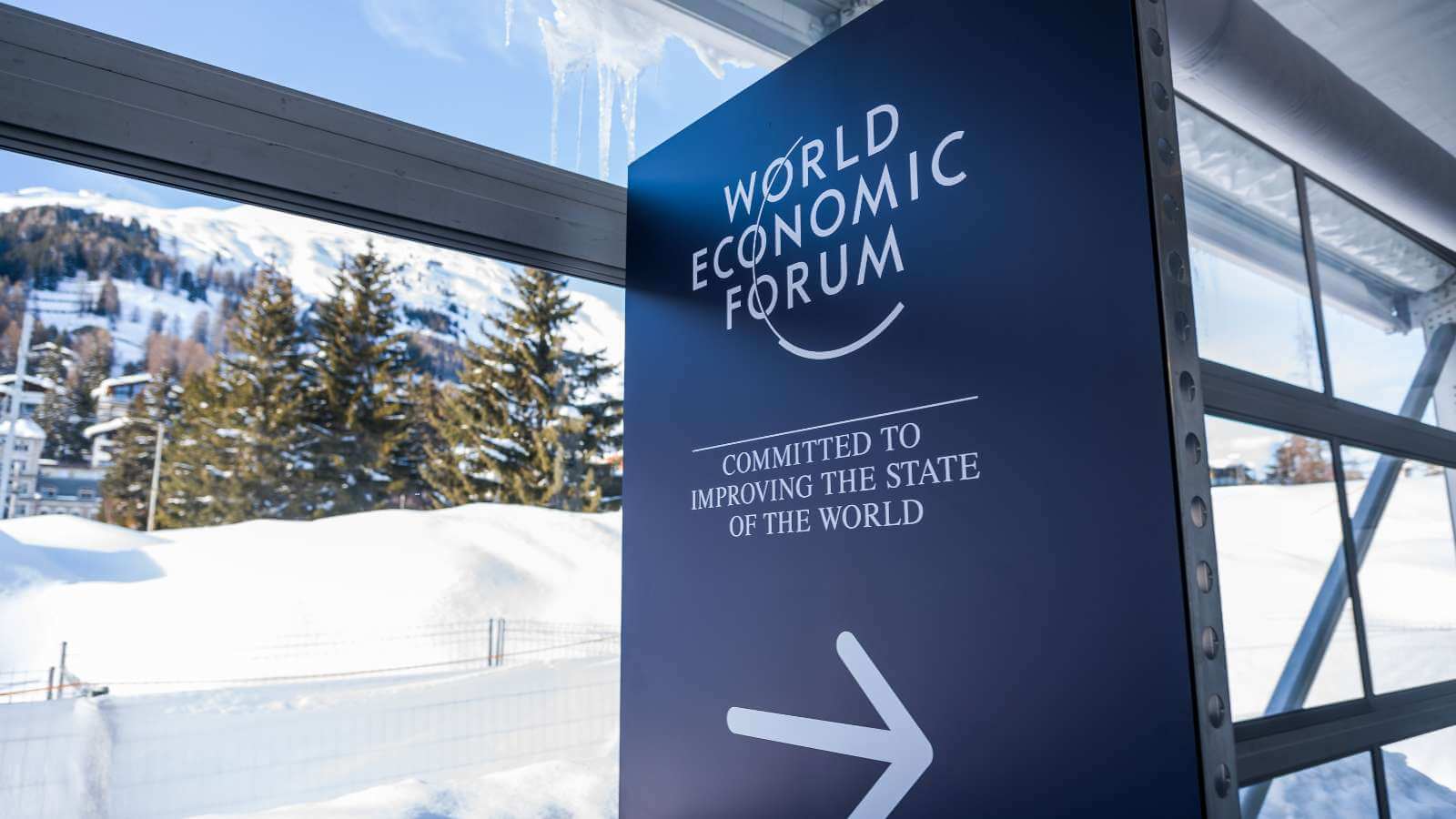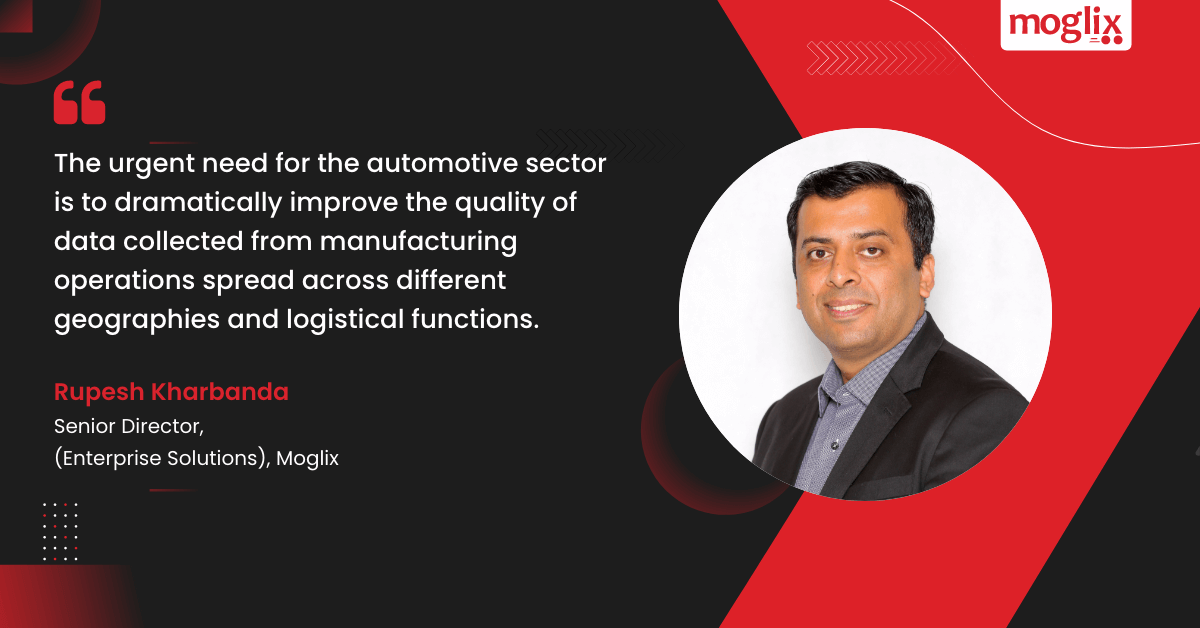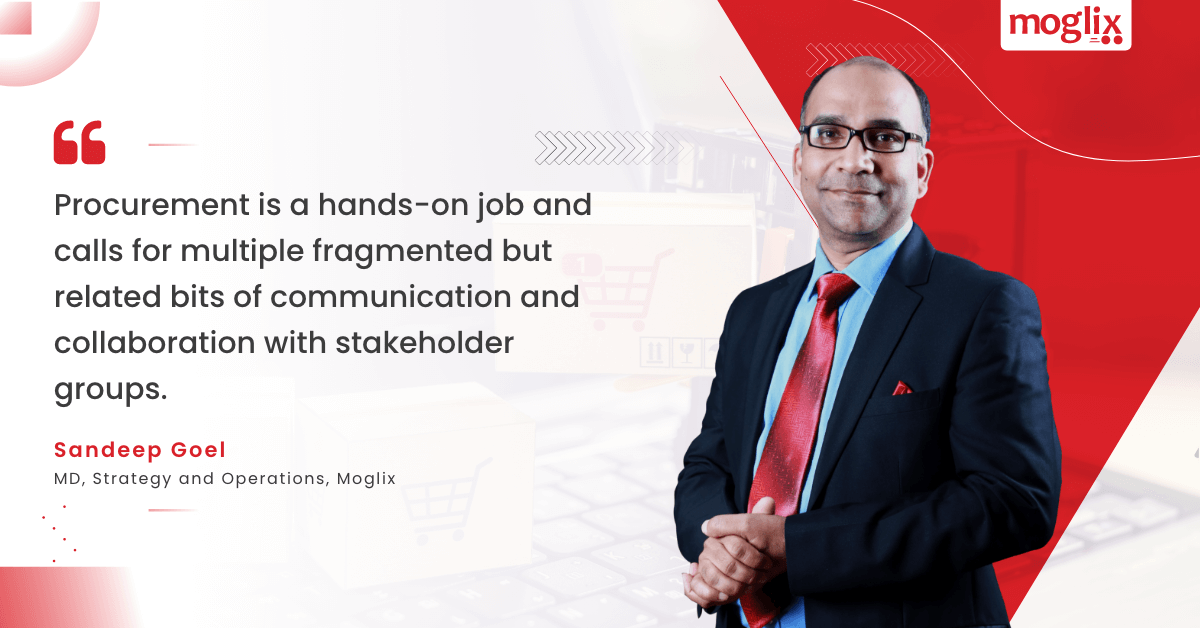Awareness Seminar on Export Finance Solutions in association with Tiruppur Exporter Association

Awareness Seminar on Export Finance Solutions in association with Tiruppur Exporter Association
Date : June 2, 2022
Organizer: Credlix
About the Event: Mr. Pramit Joshi, Director, Credlix shared his perspective at awareness seminar on Export Finance Solutions which was done in association with Tiruppur’s Exporter Association on 2nd June where our Credlix team interacted with the handicraft and furniture exporters on their Pre & Post-shipment Finance and Protection against Buyer Bankruptcy
Awareness Seminar on Export Finance Solutions in association with Export Promotion Council for Handicrafts

Awareness Seminar on Export Finance Solutions in association with Export Promotion Council for Handicrafts
Date : May 31, 2022
Organizer: Credlix
About the Event: Mr. Mayur Totla, Director, Credlix shared his perspective at awareness seminar on Export Finance Solutions which was done in association with Export Promotion Council for Handicrafts (EPCH India) on 31st May in Jodhpur where our Credlix team interacted with the handicraft and furniture exporters on their Pre & Post-shipment Finance and Protection against Buyer Bankruptcy.
What Does the 500 GW CAPEX Opportunity in Solar Energy Mean for EPC Companies?

What Does the 500 GW CAPEX Opportunity in Solar Energy Mean for EPC Companies?
Here’s the big bang news from India’s solar energy sector. In February 2022, India surpassed 50 GW of total installed solar capacity. What does this imply for EPC companies with interests in solar energy?
The Opportunity Size for EPC Companies in India’s Solar Energy Landscape
India has set an ambitious goal of producing 500 GW of renewable energy by 2030. Out of the targeted 500 GW of renewable energy, about 300 GW will be supplied by utilizing India’s immense solar energy potential.
The road to achieving over 300 GW of installed solar capacity represents a steep curve. Whatever challenges waylay India from achieving its solar power goals can be overcome with a concerted push by a superior collaboration between the government, EPC companies, OEMs, and suppliers.
How Do We Locate the Coordinates of Value in India’s Solar Energy Value Chain?
Out of the 50 GW solar capacity in India, over 42 GW stems from photovoltaic (PV) systems mounted on land, whereas around 6.48 GW comes from roof-top solar, and 1.48 GW is generated from off-grid solar PV. Ground-mounted PV systems are investment intensive and strain the company’s capital expenditure capabilities to expand its solar energy operations.
Modules, Share in Solar Energy Project Costs: 70%
Modules comprise the most significant cost component of about 70% of solar energy projects. India still imports 80-90% of its solar components.
Going with India’s Aatmanirbhar policies, the Union Budget FY23 has allocated an additional INR 19,500 crore to the Production Linked Incentive (program) to enhance India’s PV manufacturing heft. India’s production-linked incentive push to the solar industry has meant that Indian solar modules manufacturers are fast bridging the gap.
Modular Mounting Structures, Share in Solar Energy Project Costs: 10%
MMS accounts for 10% of the solar energy project costs. Modular Mounting Structures (MMS) are the supporting structures for the modules. Without these Modular Mounting Structures supporting the modules, the solar energy plant will fail miserably, considering that the modules need to be aligned at the right angle to catch the maximum possible solar irradiation.
The highest potential installation of the modules is a mark of competency of the EPC company. A strategic sourcing partner with broad experience in cultivating and consolidating a supplier base can help EPC companies access many suppliers who produce MMS at cost-effective rates without diluting quality benchmarks.
Transformers, Share in Solar Energy Project Costs: 10%
Transformers constitute about 10% of the total costs incurred in a solar energy project. These are specialized equipment manufactured by a select few vendors across the length and breadth of the country.
Sourcing transformers can be a very tricky task requiring coordination and calibration between several players in the pipeline. While procuring, it is necessary to ensure that the vendor’s background is strong enough to withstand a credibility check.
A good vendor can provide a track record of the customers serviced. Moving expensive machinery like transformers is riddled with problems and roadblocks at every turn, and without complete value chain visibility, chances of compromise on quality, delays, and logistical mishaps multiply manifold.
Next is What? Setting New Benchmarks and Bridging Gaps in the Solar Energy Supply Chain
In 2021 alone, India added a record-breaking 10 GW of solar power to its total power capacity. The solar energy capacity addition in 2021 registered a phenomenal rise of 200% over 2020, indicating an immense appetite in entrepreneurs to explore this avenue.
However, enthusiasm will have to be coupled with new-age procurement and supply chain capabilities for a solar energy project to be successful.
How Moglix MaaS Solutions for Solar Energy Projects Can Benefit EPC Companies?
Moglix’s solutions ensure that the supplier base is consolidated, inefficiencies in the logistic chain are weeded out, and the end-to-end digitization of the value chain lends unparalleled clarity to EPC companies. Moglix’s vast experience in this domain can help you navigate the source to site supply chain journey. To know more, click the link here
The Road to 500 GW Solar Energy in India and What EPC Companies Need

The Road to 500 GW Solar Energy in India and What EPC Companies Need
India is witnessing an unprecedented push for solar energy generation. By 2030, India plans on generating 500 GW of power from renewable energy sources. Out of this, 300 GW is meant to be generated from solar energy, and by the end of February 2022, India’s total solar installed capacity stood at 50 GW. Let’s dive deep into the challenges beset India’s road to 500 GW of solar energy generation.
1. Working Capital Optimization
OEMs and suppliers need working capital to maintain just-time-deliveries. The first step is for the EPC company to create a particular purpose vehicle (SPV) with a strategic sourcing partner. The strategic sourcing partner works alongside the client to meet liquidity gaps and is adequate assurance that working capital paucity does not halt operations.
2. Capital Expenditure and Credit Support
The cost for setting up a solar energy park in India amounts to INR 3200 Cr to 3500 Cr. Capital expenditure of such large amount calls for large scale credit support. Any EPC company looking to finance infra projects must be bolstered by adequate capital flows to stay committed to a project from its inception to its culmination. EPC companies will find synergy in procurement and financing operations in a strategic sourcing partner with large capital reserves.
3. Logistics
There are far too many examples of solar energy infrastructure projects that cost inordinately more than allocated funds. The supply chains of these projects are highly mismanaged with a fragmented vendor base and without logistics route optimization that leads to delays in procurement. Power project equipment, be it solar modules or modular mounting structures, can be sourced from reliable vendors, while logistics optimization enables just-in-time deliveries.
4. Operational Rigor
Solar energy EPC companies often incur project costs and time overruns. A project can, sooner rather than later, lose its mojo to a halt because of an ever-evolving, disruptive logistical or financial environment.
A strategic sourcing partner with dual prowess in the financing and supply chain domain can steer the project towards accelerated completion and fast-paced productivity without bottlenecks in capital deployment or raw material sourcing.
5. Digital Project Management
Say, a solar power project needs to source four transformers, niche products manufactured by only a select few vendors in India. The strategic sourcing vendor will execute the task of selecting the right OEM that meets the project’s custom demands. Once the order is placed, the digital project management solution will keep the solar EPC company updated about the status of the manufacturing of the transformer, delivery timelines, design and drawing challenges, if any, faced by the supplier and financing problems.
This visibility isn’t limited to transformers alone. Many capital goods including modular mounting structures and solar modules can be monitored with ease.
Moglix and EPC Companies in India: Connected Future of the Energy Supply Chain
Moglix can help you leverage the power of cloud-based project management and inject transparency, speed, and cost-effectiveness into the energy supply chain. Our solutions, which include but are not limited to consolidating the vendors’ list, predictive course correction, and a single-interface birds’ eye view of the project, can help revamp your workflow. To know more about how Moglix can help your EPC business, visit https://business.moglix.com/blogs/manufacturing-as-a-service/
EPC Companies Can Catalyze India’s WEF Davos 2022 Goals. Here’s How

EPC Companies Can Catalyze India’s WEF Davos 2022 Goals. Here’s How
Net zero by 2070 is a crystal-clear target with a timeline. What are the carbon emission challenges facing EPC companies in India? How can EPC companies be a part of the supply chain solution? What are the rewards if any for EPC companies in India for meeting the target of net zero emissions?
Cost Benefit Analysis of EPC Companies’ Mandate to Reach Net Zero Carbon Emissions
Manufacturing and construction, energy, and logistics are the three most important components of the supply chain of EPC companies.
Of the gross GHG emissions of 3364 MT CO2e in India, manufacturing and construction account for 690 MT CO2e (20.5%), energy for 1373 MT CO2e (40.8%), and transport 305 MT CO2e (9.06%). The cumulative GHG emission of 70% MT CO2e corresponds to a GDP loss of USD 350 billion.
On the contrary, a WEF research dated November 2021 asserts that solving for the net zero equation can add USD 1000 billion to India’s GDP by 2030 and USD 15000 billion by 2070.
The Supply Chain Agenda for EPC Companies to Act on WEF Davos 2022 and Net Zero
1. Address Compliance Challenges in the EPC Segment with Fit for Audit Data
Anything that cannot be measured, cannot be managed. The first step in the transition to net zero and WEF Davos 2022 ambitions is to start measuring and monitoring all transactions in the supply chain. That calls for a unified data governance model with user access on a “need to know basis” between procurement, operations, supply chain, finance, and technology teams at EPC companies.
2. Resolving Reporting Challenges with Knowledge of Cost Vs GHG Emission Metrics of Procurement Choices
Valuable supply chain data that is spread across silos, files, and offline records makes reporting difficult. EPC companies need a one page view of GHG emissions. Corporate leaders at EPC companies can switch to a digital catalog based buying solution that maps GHG emissions corresponding to units of measurement (UoM) of SKUs such as TMT bars, structural steel, CR & HR plates, precast concrete slabs, etc. That data allows them to know the cost efficiency vs carbon emission tradeoffs involved with the procurement choices they make.
3. Enabling Material, Supplier, and Logistics Substitutions in the Supply Chain
EPC companies are multi-site operators that can have either of the two supplier relationship management models.
First, they can have 300 suppliers supplying say 5 SKUs for each for 50 sites across India. Assuming that EPC companies procure each SKU at least once a month, they need to map carbon emissions for each of these 300 X 5 X 50= 75,000 transactions a month!
On the other hand, they can have a supply chain transformation, conduct a vendor consolidation exercise and enroll all 300 suppliers into its supply chain ecosystem. That reduces EPC companies’ workload to mapping carbon emissions from 5 X 50 = 250 transactions a month!
The supply chain transformation partner also takes the responsibility for finding substitute sustainable materials and suppliers that manufacture them.
The EPC company benefits from reduced costs, efficient resource utilization, and higher accountability, while environmental concerns are mitigated through bulk purchasing of sustainable materials like fly ash and pre-cast concrete slabs.
Moglix and EPC Companies in India: Connected Future of the Green Infra Supply Chain
Moglix can help you leverage the power of data analytics and inject accountability, visibility, and cost-effectiveness into the infra supply chain. Our solutions, which include but are not limited to consolidating the vendors’ list, predictive course correction, and a single-interface birds’ eye view of the project, can help revamp your workflow. To know more about how Moglix can help your EPC business, visit https://business.moglix.com/our-solutions/infrastructure
The Periodic Table of Leadership: Observations from the Laboratory of Indian Cricket

The Periodic Table of Leadership: Observations from the Laboratory of Indian Cricket
As you go from left to right on the periodic table, the acid-base character of elements goes from basic to acidic. Can leadership be defined in the context of the chemistry laboratory setting? Is there a litmus test for leadership in an organization?
What lies beneath this base to acid transformation is a display of multiple elements in leadership among individuals with diverse natures: acidic, basic, and inert. It is also a catalysis of controlled experiments to trigger responses and movements to achieve targeted outcomes.
Three Key Leaders of Team India and the Chemistry They Brought to the Dressing Room
Through the early and mid-nineties, Indian cricket fans remained glued to their television sets to watch one cricketer deliver their hopes and dreams: Sachin Tendulkar. Giving the master blaster good company was his perfect foil and the wall of Indian cricket.
Rahul Dravid, a lone warrior for the Indian cricket team, watching him bat was no less than a pure transcendental meditation.
The third leader in the Indian cricket team is “Lord Snooty.” When Sourav Ganguly captained the Indian side on the field, he had a message for his opponents: “Either you respect Team India out of your volition, or we will make you respect us.”
Testing the Elements of Human Behavior in the Laboratory of Organizational Development
Is it possible to apply the template of the periodic table of human elements of behavior to a real-world laboratory setting of organizational leadership development in the same way as the Indian cricket team discovered its next big leader, Mahendra Singh Dhoni? The answer is hidden in the elements of the periodic table and the behavioral patterns they form.
Need for Speed: Digitalization in the Automotive Industry

Need for Speed: Digitalization in the Automotive Industry
The automotive industry has emerged as a force to be reckoned with, propelling the economy’s growth narrative with enthusiasm and vigor. According to RBI figures, the industry contributes a significant 10-12% of the GVA of the manufacturing sector, underlining its importance to the economy.
Goals and objectives that automotive firms’ CPOs aim to carve out an intelligent, agile, and future-ready unit.
1. Building Resiliency in Supply Chains, Procurement, and Manufacturing
CPO now needs an anti-fragile supply and value chain that can embrace and adapt to the demand of supply chain flexibility.
2. Building Data and Digital Capabilities in The Value Chain
Digitization took the front seat in the wake of the first lockdown. CPOs across the automotive industry had to think on their feet and ensure that their stalled supply chain remained visible and traceable across the value chain. The right approach to digitization includes the extended vendor network to avoid silos of data collection and visibility down to the last mile.
3. Using Data for Seamless Physical – Digital Integration
A smarter data-intelligent business helps automotive firms eliminate price variations across plants while improving plant visibility and tracking real-time orders. It also sets up evolved ERP planning as a norm across the value chain universe of the automotive firm. High-quality data collected from vendors, OEMs, and suppliers deliver actionable insights to large firms.
The Final Word
Automotive firms were dealt a tough hand during the pandemic, and the more agile among them have responded by initiating a paradigm-changing transformation in the supply chain. Setting aside the threat of disruptions, elevating businesses to achieve holistic data intelligence has yielded impactful results such as improved supply risk management, robust savings on outlays, inventory reduction, and a dramatic fall in supply line choke-ups.
Things CIO Should Know About Procurement Transformation

Things CIO Should Know About Procurement Transformation
Three years back, we chanced upon an opportunity to collaborate with a leading FMCG company in India to fulfill their procurement mandate. However, there were a set of challenges, which could have given the next level of productivity to the business.
- It took 7 days for the procurement team to create the contract since buyers had to use a complex multi-screen application for doing the same
- When buyers logged onto the system, there were 100s of contracts waiting for their attention, with no intuitive way for them to prioritize.
- Buyers were required to fill values for which they had to refer to other systems or offline documents, making it very time-consuming
- Buyers were required to make certain decisions while creating the contract e.g., “mode of shipment”, but they didn’t have sufficient data points around costs and lead time to make the right choices.
- After submitting the contract, they had to wait for a validation report from another team. The team used to revert to them after 2-3 days with errors in their entries.
While the above case is cited in a specific context, the same set of problems are hampering productivity across the procurement function. These problems can be addressed by using 3 simple concepts.
- Super-app Experience
- Procurement Control Tower
- Risk Watcher
Bridging the Divide: Challenges at the doorstep of chemical procurement leaders
The life of procurement officers is challenging and simultaneously demands innovation and efficiency.
Summary
There is still significant room for improvement. And the road to such improvement passes through the office of the CIO.
Clockspeed 2.0

Clockspeed 2.0
Date : May 29, 2022
Organizer: XLRI
About the Event: Mr. Jasmeet Marwah, Vice President, Moglix shared his perspective on ‘Do Supply Chains run the risk of Disruption due to ESG concerns?’ at XLRI ExPGDM ClockSpeed 2.0. The panel comprises of Ms. Richa Pant (Founder, Harmony INC.), Mr. Arvind Singh Rana (Partner, Vector Consulting Group) and Mr. Naresh Babu Gutta (Director- Business Finance and Procurement, Snapdeal). The event will be moderated by Dr. Bijaya K Mangaraj, Professor – Production, Operations, and Decision Sciences, XLRI Jamshedpur.
Indian Commercial Vehicle Conclave Northern Region

Indian Commercial Vehicle Conclave Northern Region
Date : May 27, 2022
Organizer: CII
About the Event: Mr. Mukund Vasudevan, Managing Director, Moglix recently shared his perspective on ‘Transforming Indian Commercial Vehicle Industry– Strategies, For Now, Next & Beyond’ at the Confederation of Indian Industry – Indian Commercial Vehicle Conclave. While laying emphasis on strengthening the digitalization of supply chains processes for commercial vehicle manufacturers, he went on to add:
”There are 5 key elements which we’re actively engaging as Moglix with auto parts and CV manufacturers – Agility, Visibility across multiple vendors, Process automation, Analytics, and Omnichannel fulfillment.”
